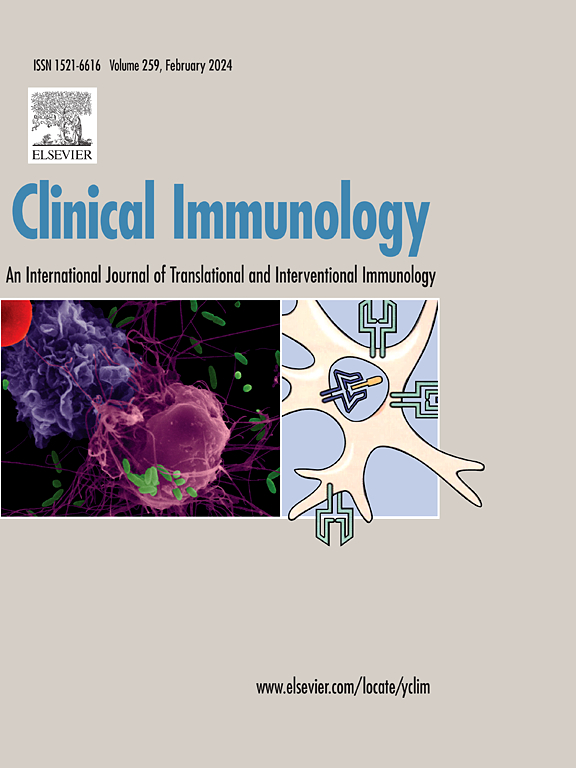由NCF2致病变异引起的黎巴嫩慢性肉芽肿病患者的临床、生化和遗传特征
IF 3.8
3区 医学
Q2 IMMUNOLOGY
引用次数: 0
摘要
慢性肉芽肿病(CGD)是由NADPH氧化酶复合物的突变引起的,这种突变损害了吞噬细胞消除注射病原体的能力。因此,CGD患者会出现反复感染和慢性炎症。我们报告了黎巴嫩17例CGD患者的临床、生化和遗传基础。全外显子组测序(WES)在NCF2中发现了2个不同的突变,导致外显子3和5的缺失,占进行WES的病例的82%。这种高患病率为诊断策略提供了基本原理,包括评估NADPH氧化酶功能,鉴定受影响的蛋白质和靶向基因测序。使用这种方法,另外3例具有类似缺失的CGD患者被确定,支持黎巴嫩人群中存在奠基者效应。这种生化和靶向测序方法快速、可靠且具有成本效益,使其成为无法负担WES的家庭特别有价值的诊断选择。本文章由计算机程序翻译,如有差异,请以英文原文为准。
Clinical, biochemical, and genetic characterization of Lebanese patients with chronic granulomatous disease due to NCF2 pathogenic variants
Chronic Granulomatous Disease (CGD) is caused by mutations in the NADPH oxidase complex that impair the ability of phagocytes to eliminate injested pathogens. As a result, patients with CGD suffer from recurrent infections and chronic inflammation. We report the clinical, biochemical, and genetic basis of the disease in 17 CGD patients from Lebanon. Whole exome sequencing (WES) identified 2 distinct mutations in NCF2 resulting in the deletion of exons 3 and 5, accounting for 82 % of the cases that underwent WES. This high prevalence provided the rationale for a diagnostic strategy involving assessment of NADPH oxidase function, identification of the affected protein, and targeted gene sequencing. Using this approach, 3 additional CGD patients with simmilar deletions were identified, supporting the presence of a founder effect in the Lebanese population. This biochemical and tageted sequencing approach is rapid, reliable, and cost-effective, making it a particularly valuable diagnostic option for families who cannot afford WES.
求助全文
通过发布文献求助,成功后即可免费获取论文全文。
去求助
来源期刊

Clinical immunology
医学-免疫学
CiteScore
12.30
自引率
1.20%
发文量
212
审稿时长
34 days
期刊介绍:
Clinical Immunology publishes original research delving into the molecular and cellular foundations of immunological diseases. Additionally, the journal includes reviews covering timely subjects in basic immunology, along with case reports and letters to the editor.
 求助内容:
求助内容: 应助结果提醒方式:
应助结果提醒方式:


